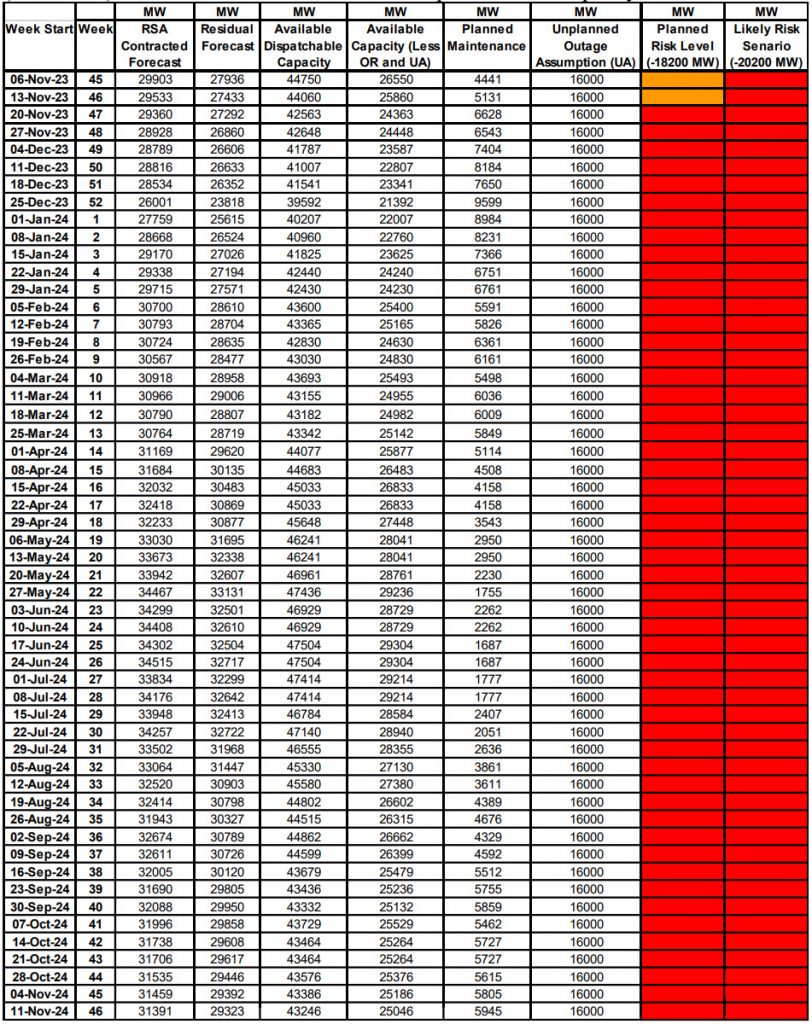Bleak outlook for load shedding in South Africa

Despite a notable improvement in South Africa’s power landscape, the latest system report from Eskom remains a sea of red, with the utility warning that the next 52 weeks are projected to see generation shortfalls of over 2,000MW (2 stages of load shedding) – at minimum.
The system report features a 52-week projection, which is coded based on the expected supply and demand.
Code Green indicates that the group expects adequate generation to meet demand and feed reserves.
Code Yellow projects a small shortfall to meet reserves (under 1,000MW) but adequate supply to meet demand.
Code Orange anticipates a 1,000MW to 2,000MW shortfall, “definitively” failing to feed reserves and possibly demand.
Code Red is when there is a 2,000+ MW shortfall where both reserves and demand won’t be met, the group said.
In its assessment of the year ahead, Eskom provides both a “planned” risk level – based on its baseline assumptions of megawatts that will be unavailable – and a “likely” risk scenario, based on the baseline assumption being exceeded by 1,500 MW.
The assumptions are all based on the last week of available operational data.
This particular assessment is based on an assumption that 16,000MW will be out due to unplanned outages. Including reserves of 2,200MW, Eskom plans for outages to hit 18,200MW.
In the likely scenario, this ramps up to approximately 20,200MW.
Given these assumptions, the group has pencilled in Code Red – the worst case – for the next year.

The outlook is read in conjunction with Eskom’s Medium-Term System Adequacy Outlook 2024 – 2028 report, which shows that, even in the best-case scenario, the utility is unlikely to have enough electricity to serve South Africa’s needs over the next five years.
In both scenarios assessed by the system operator – a low EAF (averaging 50%) and high EAF (improving to 66% and then 68%)- the system does not meet the needed adequacy levels.
The high EAF scenario is deemed manageable, but given the state of the grid, the age of the plants, and the insurmountable challenges ahead to even meet this target, it is unlikely.

The study further indicated that the situation will worsen if the plant performance decline is not arrested and new generation capacity is not rolled out timeously.
These reports from Eskom run counter to the narrative being spun around the power utility and its improved performance in recent weeks.
South Africans can be forgiven for thinking that the energy situation is making positive strides, but there are several ‘levers’ for Eskom to pull to give the illusion of improved performance.
When load shedding was suspended for nine consecutive days in October, generation data showed that this was only possible by Eskom doubling its use of gas turbines, together with much lower demand from energy users.
As soon as demand spiked up, however, load shedding was back at high levels.
More recently, Eskom has been able to keep load shedding at stage 2 in the evenings and lower or suspended during the day – but again, the data shows that this only possible by cutting back planned maintenance and, again, lower demand from users.
In the meantime, EAF has again been dropping (hitting 54% in week 44) and unplanned outages not being as contained as hoped.




















